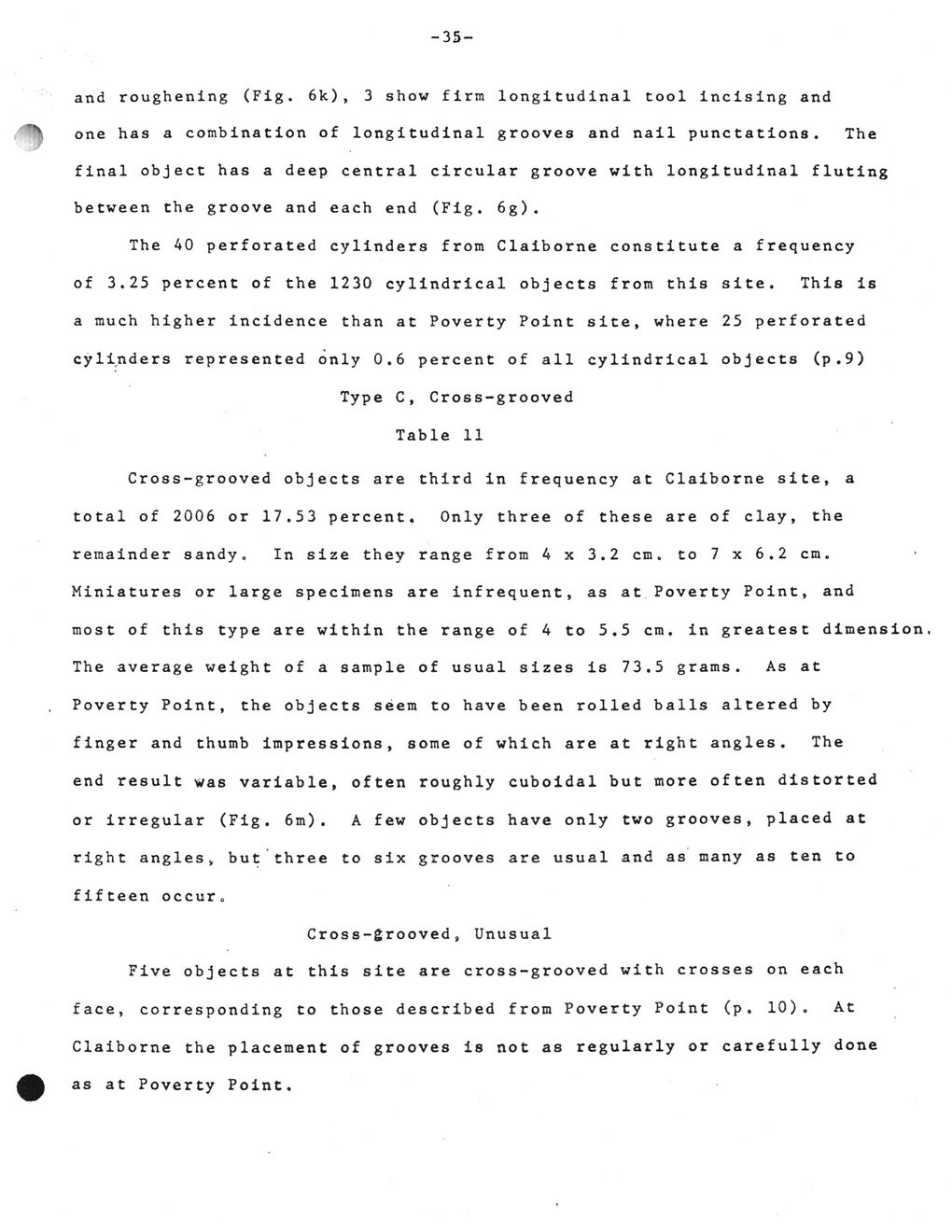This text was obtained via automated optical character recognition.
It has not been edited and may therefore contain several errors.
and roughening (Fig. 6k), 3 show firm longitudinal tool incising and one has a combination of longitudinal grooves and nail punctations. The final object has a deep central circular groove with longitudinal fluting between the groove and each end (Fig. 6g). The 40 perforated cylinders from Claiborne constitute a frequency of 3.25 percent of the 1230 cylindrical objects from this site. This is a much higher incidence than at Poverty Point site, where 25 perforated cylinders represented only 0.6 percent of all cylindrical objects (p.9) Type C, Cross-grooved Table 11 Cross-grooved objects are third in frequency at Claiborne site, a total of 2006 or 17.53 percent, Only three of these are of clay, the remainder sandy. In size they range from 4 x 3.2 cm. to 7 x 6.2 cm. Miniatures or large specimens are infrequent, as at Poverty Point, and most of this type are within the range of 4 to 5.5 cm. in greatest dimension. The average weight of a sample of usual sizes is 73.5 grams. As at Poverty Point, the objects seem to have been rolled balls altered by finger and thumb impressions, some of which are at right angles. The end result was variable, often roughly cuboidal but more often distorted or irregular (Fig. 6m). A few objects have only two grooves, placed at right angles, but three to six grooves are usual and as many as ten to fifteen occur. Cross-grooved, Unusual Five objects at this site are cross-grooved with crosses on each face, corresponding to those described from Poverty Point (p. 10). At Claiborne the placement of grooves is not as regularly or carefully done as at Poverty Point.

Walden 045